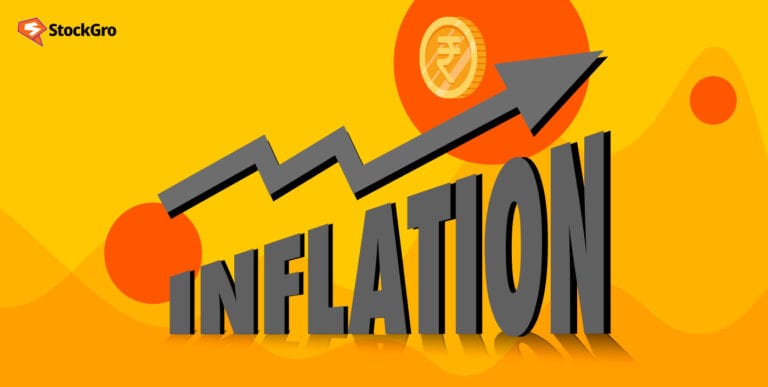
Introduction
Did you know Bharti Airtel launched India’s first payment Bank named Airtel Payments Bank in January 2017? A payments bank is similar to a normal bank only that it works at a smaller scale and does not carry any credit risk. It is a banking operation that includes most of the banking activities. It can accept deposits up to Rs 1 Lakh and provides remittance services, mobile payment services, transfer services, and other banking facilities.
In this article we will cover What are payment banks and how they work.
What are payment banks?
Let’s start with the basics. The payment bank model was introduced into the Indian banking sector by the Reserve Bank of India (RBI) to bring the financially excluded and provide them with basic banking services, mainly for the unbanked population of rural India
In September 2013, the Reserve Bank of India constituted a committee under the leadership of Dr Nachiket Mor for the Study of Comprehensive Financial Services for Small Enterprises and Low-Income Households.
The overall objective of the team was to design measures aimed at ensuring financial inclusion and greater accessibility to financial services. The committee gave its recommendations in a report to the RBI in January 2014. One of the committee’s crucial recommendations was setting up special banks called ‘payments banks’ dedicated to full coverage of individuals and the smallest businesses.
Payment banks essentially aim to provide comprehensive banking services such as savings accounts, money transfers, and payment of bills. They can accept deposits up to ₹1 lakh per account. Additionally, payment banks can also sell financial products and employ remittance transfer services.
How do payment banks work?
Digital payment banks, as the name suggests, offer a digital platform that leverages the advancement in technology to allow everyone to get their services. They serve through different channels, for instance, mobile banking, and internet banking, and are consistent with agent networks.
This virtual banking model embraces digital-first technology to ensure customers’ banking needs are served remotely and irrespective of the location.
A payment bank is not a commercial bank but a registered public limited company under the Companies Act, 2013 which has also obtained a licence under Section 22 of the Banking Regulation Act, 1949 and a special permit by RBI to operate as a payments bank.
What services do payment banks offer?
Payment banks offer a range of services tailored to meet the needs of their customers. Here are some key services you can expect from a payment bank:
Savings accounts
Payment banks run savings accounts starting with a low minimum balance and they carry all the basic banking features that a conventional bank does. These entities aim at giving even the poorest of individuals who cannot access conventional banking services the privilege of having a bank account for their use.
Money transfer services
The major role that payment banks play is to guarantee the safe transfer of funds both within and across nations. Consumers are now able to send and receive money instantly and safely by means of the payment bank accounts of their choice.
Bill payments
Convenience is one of the key features of payment banks as customers can make their payments easily by using digital platforms. Whether it is electricity bills, phone recharge, or utility payments, payment banks make it simple to manage your finances from your smartphone.
Digital wallets
Many payment banks have digital wallets that may be used to store funds, send and receive payments, and conduct online financial transactions. The e-wallets provide a simple and secure way to organise your finances, saving you the hassle of dealing with physical money.
Also Read: Gilt-edged securities: A safe and profitable investment option in India
Can payment banks give loans?
An interesting fact is that although payment banks may keep deposits and facilitate payments, they are not allowed to give loans or issue credit cards. That means unlike traditional banks they are not entitled to lend money or issue credit cards to their clients. Instead, they offer various services that revolve around core/basic banking services to their customers.
This barrier is a regulatory requirement, set by the Reserve Bank of India (RBI) in 2014 to protect the financial system from crises. In comparison with other types of banks, payment banks are primarily devoted to the provision of basic banking services like savings accounts, remittance services, and utilities: bill payments.
Nevertheless, it is important to understand that these banks can cooperate with other financial bodies like traditional banks and Non-banking Financial Companies (NBFCs), to provide loan options for their clients.
Through strategic partnerships, the payment banks may utilise the expertise and infrastructure of such partners to offer a wider spectrum of services while also fulfilling the regulator’s demands.
Overall, while payment banks may not be able to directly extend loans to customers, their role in fostering financial inclusion and expanding access to basic banking services is instrumental in driving economic growth and development, particularly in underserved regions of the country.
How many payment banks are there in India?
As of now, there are a handful of payment banks operating in India, each offering unique services and features. While the number of payment banks may be limited, their impact on financial inclusion and accessibility is significant. Currently, India has six payment banks:
- Airtel Payment Bank
- India Post Payment Bank
- Fino
- Paytm Payment Bank
- NSDL Payment Bank
- Jio Payment Bank
According to National Payments Corporation of India (NPCI) data, currently, Paytm Payment Bank is leading the charge among the 6, with 1442.41 million customer-initiated transactions as of January 2024. Airtel Payment Banks stands at a distant second position with 902.32 million customer-initiated transactions.
Also Read: What is options trading and how does it work?
Role of payment banks in financial inclusion
We often hear about banking services not reaching the nook and corner of the country. Through digital payment networks, rural India can benefit a lot. Individuals in remote villages of the country still face challenges in accessing traditional banking services due to the lack of nearby bank branches and the complexity of banking procedures. Here are two main benefits of payment banks.
- Convenience & Efficiency: Customers are looking for convenience, speed, and efficiency in making financial transactions. And that is where payment banks excel. Their low-cost and high-tech form of banking helps them serve the poor who might otherwise be left out.
- Affordable Banking Services: Conventional banks usually charge expensive fees and require a minimum balance which is beyond the reach of many people. On the other hand, payment banks provide straightforward, transparent services at a fraction of the cost of traditional banks. Therefore this will result in more money in the hands of Indians – giving a fillip to our economy and helping in creating a better future for our country.
Payment banks play a crucial role in providing essential financial services. With the advancement in technology, digital payment banks have given much-needed relief through digital transactions.
Conclusion
Payment banks are the torchbearers of financial inclusion, pushing the banking services to the fingertips of millions of Indians. Even though they can’t give out loans directly, their emphasis on standard banking services like savings accounts, money transfers, and billing payments plays a great role in boosting the economy and overall development of the country.
With the financial revolution charting new paths with each passing day, payment banks continue to lead, bridging the gap and creating options left, right, and centre for every Indian. Want to explore more useful financial info that will help you in the real world? Visit StockGro today!

